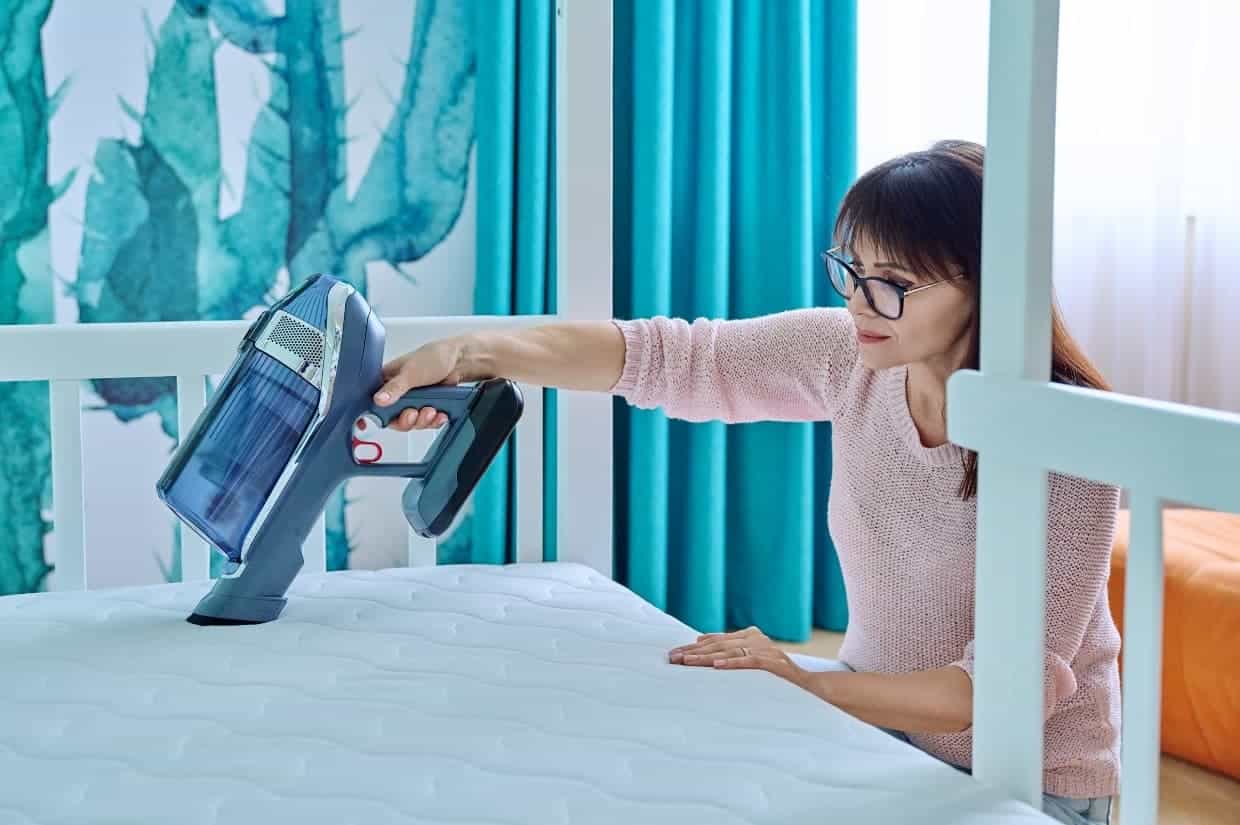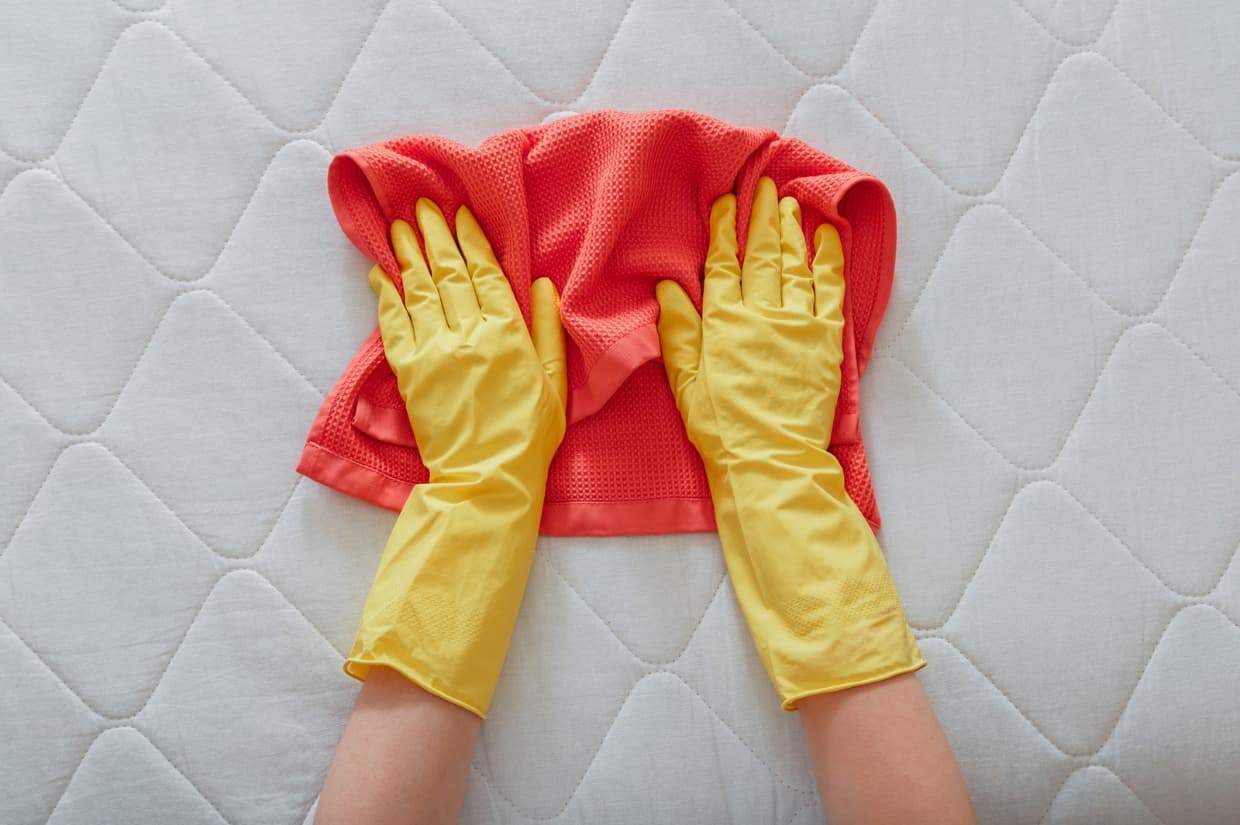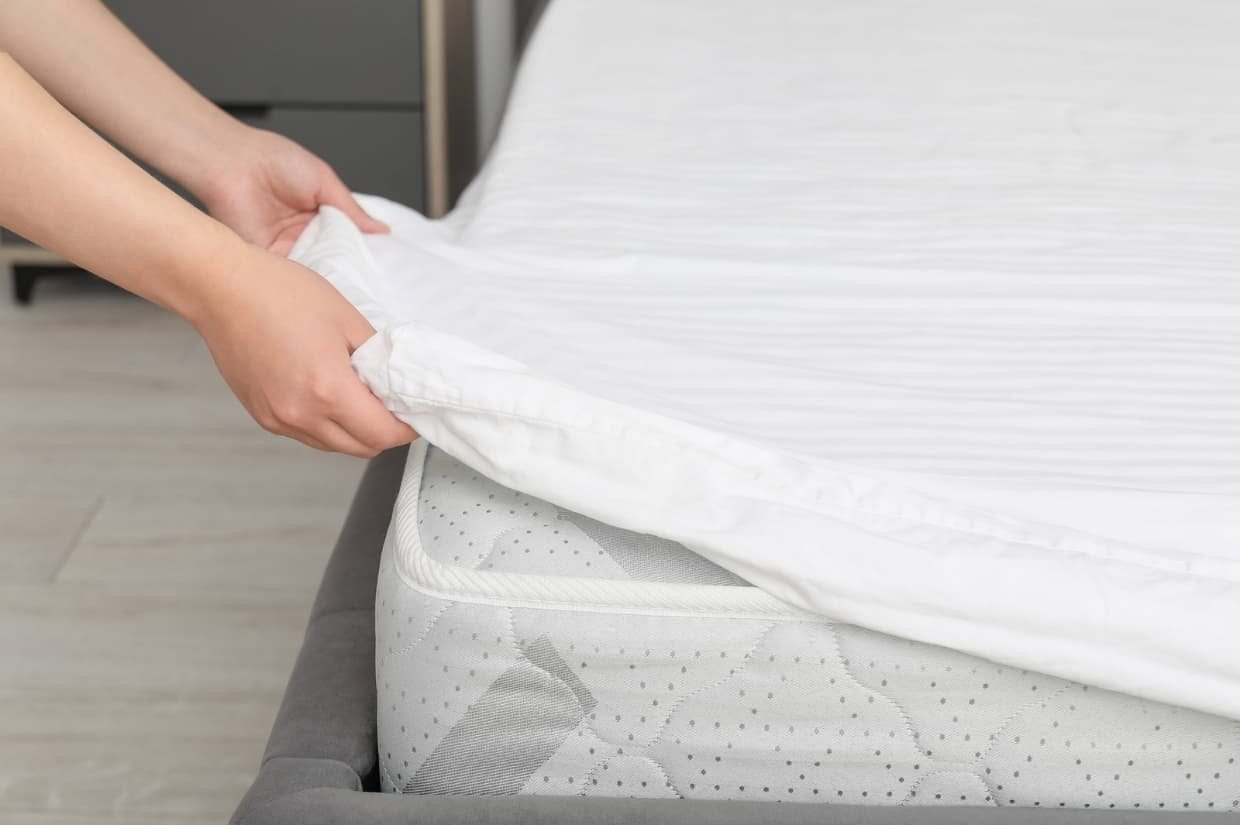A comfortable and clean mattress is essential for a good night’s sleep but it can collect dust, allergens and odors over time. Fortunately, refreshing your mattress doesn’t require professional cleaning services or expensive products. Here’s a guide on how to clean your mattress and keep it in top condition.

Why care for your mattress?
Your mattress directly impacts your sleep quality and overall health. Dust mites, dead skin cells, sweat and allergens that accumulate over time can create a breeding ground for bacteria and trigger allergies. Neglecting to clean your mattress can also lead to unpleasant odors, disrupting your rest.
A clean mattress also lasts longer. When you take care of it, you’re helping it stay supportive and comfy for years. Plus, let’s be honest — sleeping on a fresh, clean mattress just feels better. It can help you relax and rest well, which is key for your health and energy. On top of that, a clean mattress helps keep your whole bedroom healthier by cutting down on dust and allergens, making it a nicer place to unwind.
Use a waterproof cover to protect your mattress
Consider investing in a waterproof mattress cover, especially if you have small kids or pets. It’s an extra layer of protection for your mattress and acts as a shield for nighttime accidents, spills and pet messes that can soak into the mattress, causing stains and odors that are tough to remove.
What you’ll need
To freshen up your mattress, gather a few simple supplies you likely already have at home. These items are gentle on your mattress and safe to use in your bedroom:
- Baking soda.
- A vacuum cleaner with an upholstery attachment.
- Essential oil — optional, for a subtle scent.
- A spray bottle.
- Hydrogen peroxide.
- A microfiber cloth.
Strip the bed
Remove all bedding, including sheets, pillowcases and mattress protectors. Wash them in hot water to kill dust mites and remove odors. Dry the bedding thoroughly to prevent reintroducing the moisture to your clean mattress.
Vacuum thoroughly
Carefully vacuum the entire mattress surface using the upholstery attachment on your vacuum cleaner. Pay extra attention to seams, crevices and edges where dust and debris often hide. This step removes loose dirt, allergens and dust mites, leaving a clean surface for the next steps.
Deodorize with baking soda
Sprinkle a generous amount of baking soda evenly across the mattress. Before doing so, mix a few drops of your favorite essential oil, like lavender or eucalyptus, with the baking soda for a refreshing scent. Let the baking soda sit for several hours to absorb odors and moisture.
Spot clean stains
For stains, after sprinkling baking soda on the mattress, lightly spritz the affected area with hydrogen peroxide. Let sit for several hours.
For tougher stains, make a half cup of hydrogen peroxide or white vinegar and 1 tablespoon of baking soda solution. Soak a clean cloth in the solution and place it on top of the stain. Then wrap the cloth around an iron and gently iron the stain away.

Vacuum again
Once the baking soda has worked its magic, vacuum the entire surface again to remove the powder and any loosened particles. Your mattress will look and smell fresh.
Air it out
If possible, let the mattress air out in a well-ventilated area or near the window to remove any lingering moisture. This step helps prevent mold and mildew underneath the surface of your mattress.
Protect with a mattress cover
Once the mattress is clean and dry, use a waterproof mattress cover to prevent future messes and extend its lifespan. Put on fresh, clean sheets and enjoy a refreshed sleeping environment. Opt for breathable fabrics to enhance comfort and regulate temperature while you sleep.

How often should you clean your mattress?
To keep your mattress in great condition, aim to clean it every six months as part of your regular household maintenance. If you have allergies, pets or young children, consider cleaning it every three months to reduce allergens and address spills or accidents more frequently. Smaller tasks like vacuuming the surface or spot-cleaning stains can be done as needed to keep your mattress fresh between deep cleanings.
“I clean my mattress twice a year — in the spring and fall, and I always use a good mattress cover to keep it in top shape and help prevent stains. For any spots that do appear, I’ve found that a mix of baking soda and a little water works wonders — just rub it in, let it sit until it dries and then vacuum it up. It’s an easy routine that keeps my mattress fresh and feeling like new.”
— Kristin King, Dizzy Busy and Hungry
How often should you change your mattress?
While regular cleaning can extend its lifespan, no mattress lasts forever. Most mattresses need replacing every 7 to 10 years, depending on the type, quality and level of care. Signs it’s time to change include sagging, lumps or waking up with aches and pains. If your mattress no longer provides proper support or you notice increased allergy symptoms despite regular cleaning, it might be time to invest in a new one.
One last thing
With regular care and attention, your mattress can provide better support, comfort and longevity. By following these simple steps, you’ll enjoy a cleaner, fresher sleeping environment, leading to more restful nights. A little effort now will save you from replacing your mattress sooner than necessary.
Tamara Tsaturyan is the owner and writer of Thriving In Parenting. It’s a website focused on providing simple tips for busy parents — easy and healthy recipes, home decor and organization ideas and all things parenting.